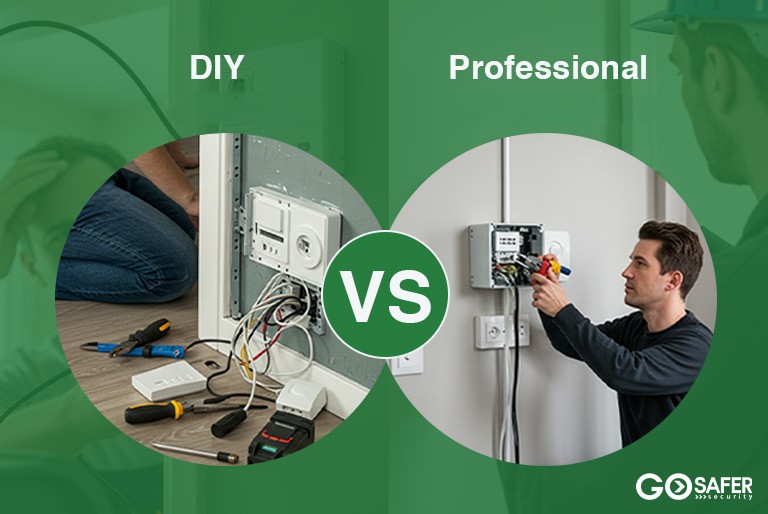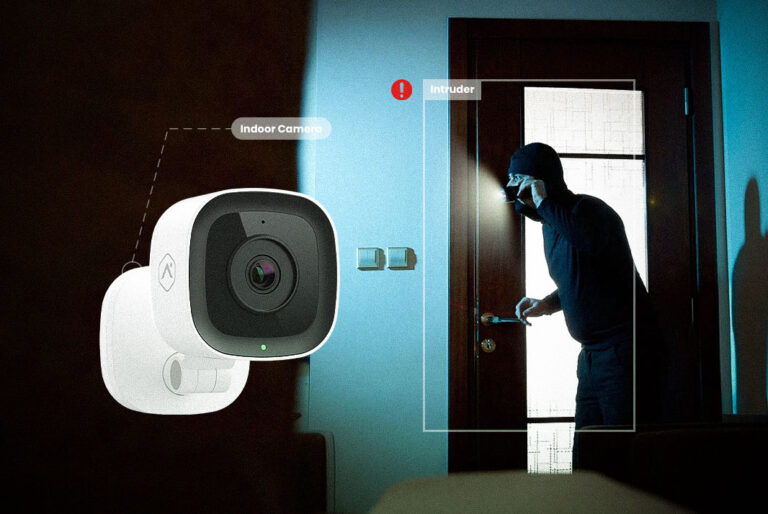Home security has evolved fast in the last few years. With smarter cameras, wireless sensors, and more affordable devices, the question many homeowners ask is simple: Should I install my own security cameras or get a professionally installed security system? This comprehensive guide blends both perspectives, DIY and professional, so you can decide what truly works best for your home.
Table of Contents
ToggleUnderstanding Security Cameras and Full Security Systems
Before diving into installation choices, it’s important to understand the difference between a standalone camera setup and a complete home security system.
Security cameras alone provide visual monitoring, while a full system includes sensors, alarms, hubs, and smart automation. If you’re unsure which is right for you, check out this breakdown of how a system works in this guide on the full home security system anatomy.
Components of a Modern Home Security System
A complete system typically includes:
Cameras
Indoor and outdoor cameras, often equipped with night vision and motion detection.
Sensors
Door, window, glass break sensors, and environmental sensors.
Control Panels or Hubs
Your main command center, often linked to an app for remote control.
DIY Installation: When It Makes Sense
DIY installation appeals to many homeowners because it gives you control and can lower costs dramatically. If you’re tech-savvy, comfortable with basic tools, or living in a rental, DIY may be your best route.
DIY Security Camera Installation
Installing your own security cameras may sound intimidating, but many modern devices are designed for simple setup.
Tools You’ll Commonly Need
- Drill
- Mounting screws
- Ladder
- Smartphone for app setup
Basic Steps
- Choose placement points
- Drill and mount the camera brackets
- Connect to Wi-Fi
- Set up the app for live monitoring
To help with choosing the right camera for your home type, refer to this guide on the best surveillance cameras for different types of homes.
DIY Full Security System Installation
A DIY security system usually arrives pre-packaged, with instructions for connecting sensors and syncing devices to your app.
Installation Steps
- Unbox and review components
- Plan your sensor placements
- Install door/window sensors
- Set up the control panel or hub
- Run a full system test
DIY works best when your home layout is straightforward and you’re confident following technical instructions.
Pros of DIY Installation
- Cost-Saving: You avoid labor fees.
- Full Control: You decide placement and setup.
- Flexible Timeline: No professional scheduling needed.
Cons of DIY Installation
- Risk of Incorrect Setup: Gaps in coverage can occur.
- Limited Professional Insight: No expert optimization.
- Potential Troubleshooting Issues: You’re responsible for fixing issues.
Professional Installation: When It’s the Better Option
If you live in a larger home, manage a business, or want a seamless, optimized setup, professional installation is often the smarter choice.
Professional Installation for Camera Systems
Experts ensure:
- Cameras are optimally placed
- Wiring and power setups follow safety standards
- The system integrates smoothly with your network
Professional Installation for Complete Security Systems
Professionals go beyond basics by conducting full property assessments, integrating smart devices, and ensuring long-term reliability.
To explore how smarter systems perform, read about this smart home security systems that outshine traditional setups.
Pros of Professional Installation
- Guaranteed Accuracy: Every device is tested
- Expert Optimization: Best angles, placements, and integrations
Cons of Professional Installation
- Higher Upfront Cost
- Requires Scheduling
DIY vs. Professional Installation: A Side-by-Side Comparison
| Factor | DIY | Professional |
| Cost | Lower | Higher |
| Experience Required | Moderate | None |
| Time | Flexible | Scheduled |
| Reliability | Depends on skill | High |
| Scalability | Limited | Wide-ranging |
For more cost-saving strategies, explore ways to cut home security systems costs.
Key Factors to Help You Decide
Ask yourself:
- What’s my budget?
- How large is my home?
- Am I comfortable installing tech devices?
- Do I want a permanent or temporary solution?
- Will I expand the system later?
Tips for a Smooth Installation (DIY or Professional)
- Test devices before final mounting
- Map out coverage zones
- Follow recommended camera heights
- Do a full system diagnostic after installation
Get more helpful tips through easy home security tips for beginners.
Conclusion
Whether you choose a DIY security camera installation or full professional setup, the most important factor is choosing a system that truly protects your home while fitting your lifestyle. DIY gives you affordability and flexibility; professional installation gives you accuracy and peace of mind. With the right planning and the resources linked throughout this guide, securing your home becomes clearer, easier, and more effective than ever.







